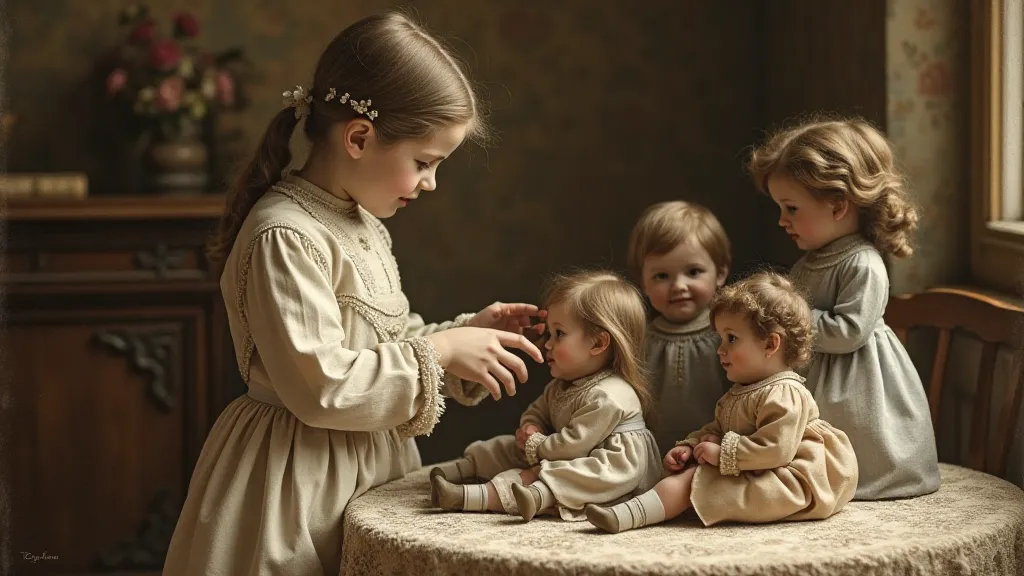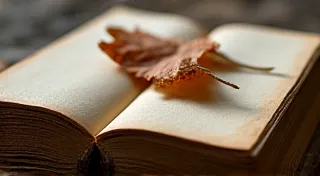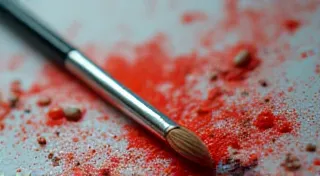Lost in Amber: Preserving the Fragility of Antique Doll Accessories
There’s a peculiar magic in holding an antique doll. Not just the charming porcelain face or the carefully stitched limbs, but the whisper of stories held within their tiny wardrobes. These aren't mere toys; they are miniature echoes of a bygone era, each button, ribbon, and tiny shoe a testament to the meticulous craft and the hopes and dreams of the children who once cherished them. My own fascination began with a single doll, a bisque beauty named Beatrice, discovered in my grandmother’s attic. It wasn’s Beatrice herself that captivated me, but the faded silk dress, patched and darned with an almost heartbreaking tenderness.
The fragility of these accessories is a constant, poignant reminder of their age. Unlike modern toys, designed for durability and mass production, antique doll clothing and shoes were often handmade, utilizing delicate fabrics and intricate detailing. They were loved, played with, and sometimes, simply worn thin. The very signs of wear – the sun-faded hues, the loose stitching, the scuffed soles – are part of their history, their story. To attempt restoration is a delicate balancing act; to erase the past is to betray the doll’s legacy.
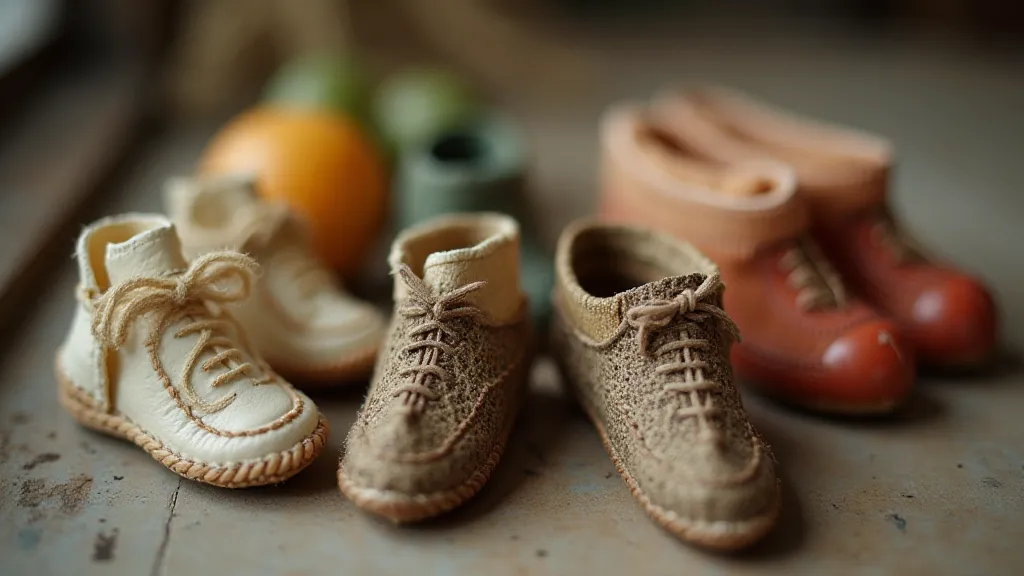
The Materials Speak: Understanding Antique Doll Wardrobes
The materials used in antique doll clothing offer valuable clues about a doll’s age and origins. Early doll clothes, particularly in the mid-19th century, often featured natural fibers like cotton, linen, and wool. These materials were readily available and relatively inexpensive. As the Victorian era progressed, silk and velvet became increasingly common, reflecting a growing middle class and a desire for finer things. French fashion dolls, particularly, were known for their exquisite silk dresses, often adorned with intricate lace and embroidery. The creativity extended beyond just the fabrics; sometimes, unexpected and unusual materials found their way into doll creation, hinting at resourcefulness and innovation. Exploring the doll’s cabinet of curiosities reveals some truly remarkable examples.
The construction methods also varied. Early garments were often simply sewn, with minimal embellishment. As techniques improved, more sophisticated tailoring became possible. Look for tiny pleats, rolled hems, and carefully placed darts. Tiny, hand-sewn buttons, often made of bone, shell, or even painted glass, are another telltale sign of age. Examining the meticulous construction and the materials used can give insight into the world these dolls inhabited - a world where imagination and resourcefulness were key.
Understanding the materials is crucial for proper preservation. Silk, for instance, is incredibly delicate and susceptible to water damage and light fading. Wool can attract moths, and linen is prone to discoloration. Careful handling and storage are essential to minimize deterioration.
Challenges in Preservation: Time’s Relentless Touch
Preserving antique doll accessories isn’t about achieving pristine perfection. It’s about stabilizing their condition, preventing further damage, and honoring their history. Several factors contribute to their deterioration. Light exposure, especially sunlight, fades colors and weakens fabrics. Humidity promotes mold and mildew growth. Pests, like moths and carpet beetles, can wreak havoc on natural fibers. And of course, the simple passage of time takes its toll, weakening seams and causing fabrics to fray.
One of the biggest challenges is dealing with water stains. Accidents happen, and antique dolls often bear the marks of spilled juice or unfortunate baths. Water stains are notoriously difficult to remove completely without damaging the fabric. Sometimes, the best approach is to accept them as part of the doll’s story, acknowledging the wear and tear of years gone by. Trying to aggressively clean a stained garment can often do more harm than good.
Another common problem is thread degradation. Natural thread, often made of linen or cotton, weakens over time, causing seams to come undone. Re-sewing delicate seams requires patience, a steady hand, and the use of archival-quality thread that matches the original in color and weight. This isn't a task for beginners; it's best left to experienced textile conservators. Sometimes, appreciating the entire context of a doll’s life involves understanding the environments and social structures that shaped their creation and subsequent care—a glimpse into the ghosts of playhouses where these cherished objects once held a central place.
Practical Advice for Preservation & Gentle Care
While full restoration should be left to professionals, there are several simple steps collectors can take to protect their antique dolls and their wardrobes. First and foremost, proper storage is key. Dolls should be stored in a cool, dry, and dark environment, away from direct sunlight and humidity.
Acid-free boxes and tissue paper are essential for protecting delicate fabrics. Avoid storing dolls in plastic bags, as plastic can trap moisture and promote mold growth. Regularly inspect your dolls for signs of pest infestation. Early detection is crucial to prevent significant damage.
When handling antique doll clothing, do so with clean hands and avoid excessive touching. Dust regularly with a soft brush. If cleaning is necessary, spot clean only, using a mild detergent and distilled water. Always test the cleaning solution on an inconspicuous area first.
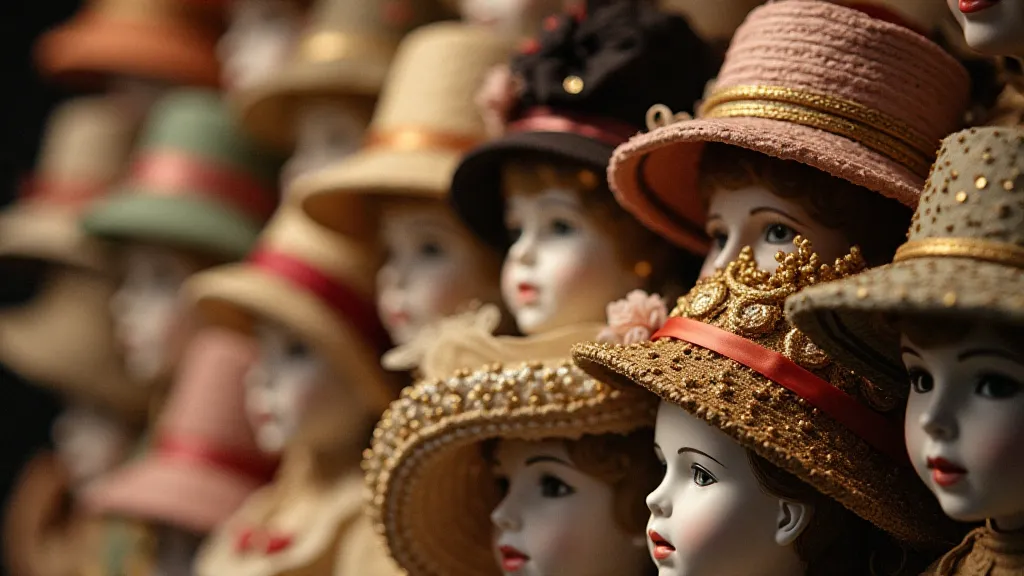
More Than Toys: Connecting with the Past
Collecting antique dolls isn’t just about acquiring beautiful objects; it’s about connecting with history, understanding the lives of those who came before us, and appreciating the artistry and craftsmanship of a bygone era. Each doll, each tiny garment, holds a story waiting to be discovered. It's a privilege to be their caretaker, to offer them a safe haven and to preserve their fragile beauty for generations to come.
I remember once finding a tiny, hand-stitched repair on Beatrice's dress - a small patch of different fabric, carefully sewn to mend a tear. It wasn’t perfect, but it spoke volumes about the love and care that had been given to that doll. It wasn’t a flaw; it was a testament to a child’s devotion, a tangible link to the past. And it’s those small details, those poignant reminders of human connection, that make collecting antique dolls so deeply rewarding.
There's a certain melancholy beauty in recognizing the fragility of these treasures. They are reminders that even the most cherished possessions are not immune to the ravages of time. But it's also a call to action – a responsibility to care for them, to appreciate them, and to share their stories with others. They are more than toys; they are pieces of history, fragments of childhood, and echoes of a world long gone. The intricate mechanisms within some dolls offer a further layer of fascination, demonstrating the ingenuity of engineers—some crafted with a precision reminiscent of modern marvels, as explored in the clockwork heart of these treasured possessions.
Further adding to the fascination is the geographic diversity within antique doll collections, reflecting trade routes and cultural influences throughout history. Understanding where a doll originated can unlock a wealth of information about the historical context surrounding its creation—a fascinating glimpse into the cartography of childhood.
